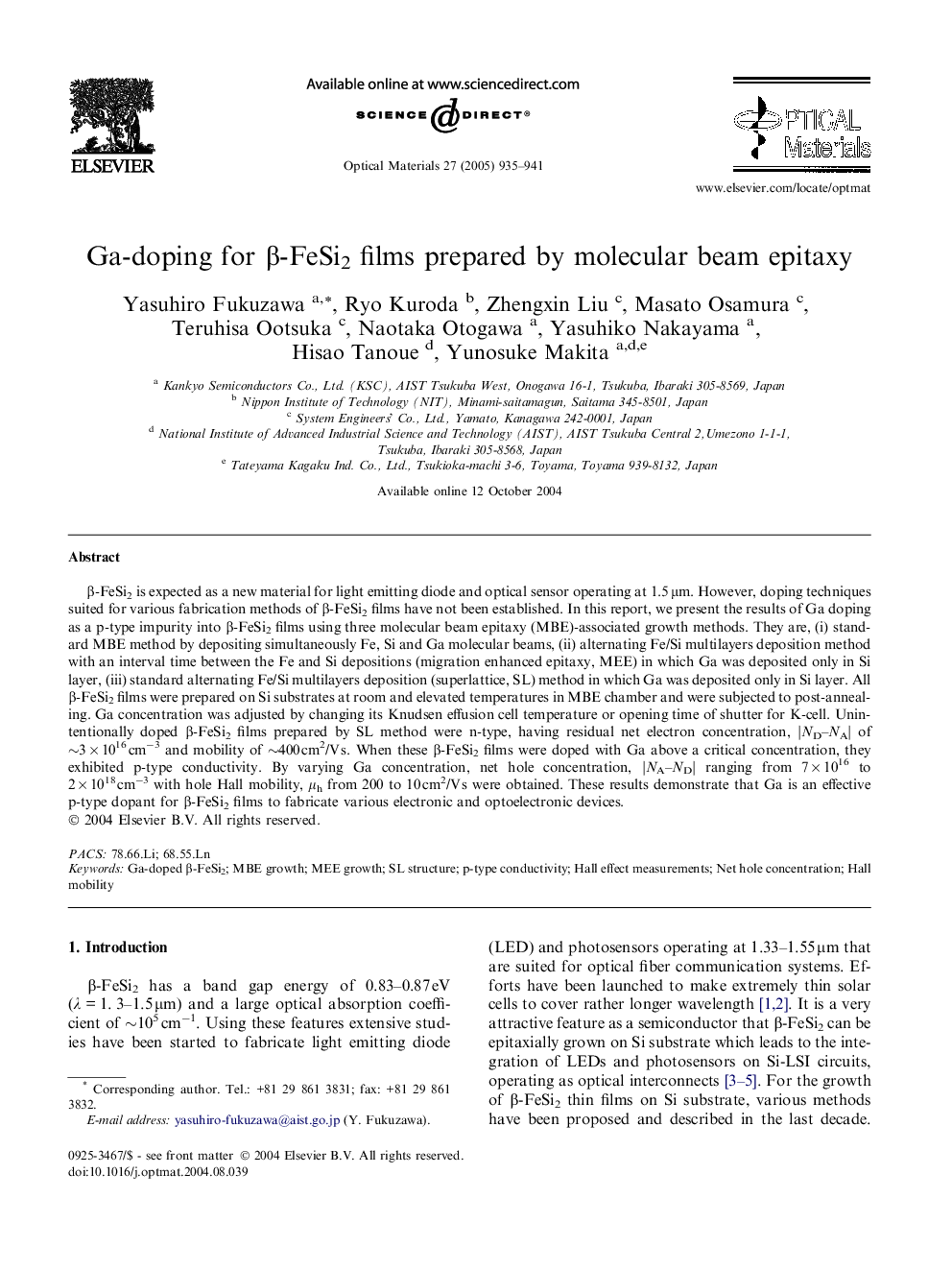| Article ID | Journal | Published Year | Pages | File Type |
|---|---|---|---|---|
| 10633681 | Optical Materials | 2005 | 7 Pages |
Abstract
β-FeSi2 is expected as a new material for light emitting diode and optical sensor operating at 1.5 μm. However, doping techniques suited for various fabrication methods of β-FeSi2 films have not been established. In this report, we present the results of Ga doping as a p-type impurity into β-FeSi2 films using three molecular beam epitaxy (MBE)-associated growth methods. They are, (i) standard MBE method by depositing simultaneously Fe, Si and Ga molecular beams, (ii) alternating Fe/Si multilayers deposition method with an interval time between the Fe and Si depositions (migration enhanced epitaxy, MEE) in which Ga was deposited only in Si layer, (iii) standard alternating Fe/Si multilayers deposition (superlattice, SL) method in which Ga was deposited only in Si layer. All β-FeSi2 films were prepared on Si substrates at room and elevated temperatures in MBE chamber and were subjected to post-annealing. Ga concentration was adjusted by changing its Knudsen effusion cell temperature or opening time of shutter for K-cell. Unintentionally doped β-FeSi2 films prepared by SL method were n-type, having residual net electron concentration, â£ND-NA⣠of â¼3 Ã 1016 cmâ3 and mobility of â¼400 cm2/V s. When these β-FeSi2 films were doped with Ga above a critical concentration, they exhibited p-type conductivity. By varying Ga concentration, net hole concentration, â£NA-ND⣠ranging from 7 Ã 1016 to 2 Ã 1018 cmâ3 with hole Hall mobility, μh from 200 to 10 cm2/V s were obtained. These results demonstrate that Ga is an effective p-type dopant for β-FeSi2 films to fabricate various electronic and optoelectronic devices.
Related Topics
Physical Sciences and Engineering
Materials Science
Ceramics and Composites
Authors
Yasuhiro Fukuzawa, Ryo Kuroda, Zhengxin Liu, Masato Osamura, Teruhisa Ootsuka, Naotaka Otogawa, Yasuhiko Nakayama, Hisao Tanoue, Yunosuke Makita,
